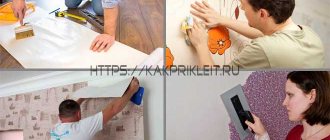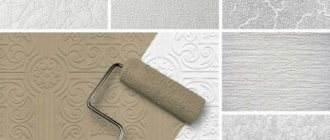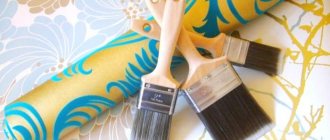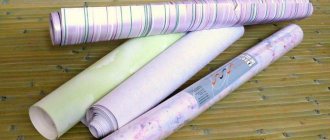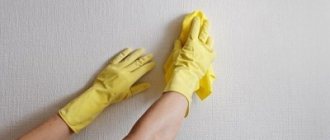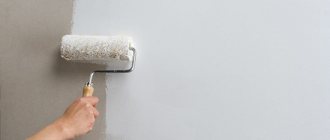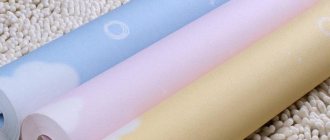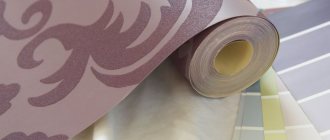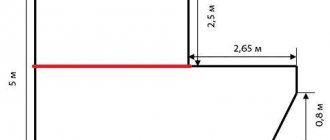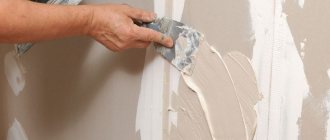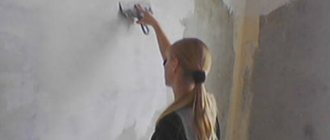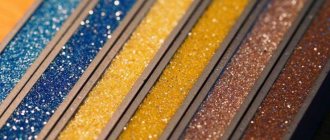Every beginner can cope with such a simple and affordable type of finishing work as wallpapering walls. The complex, long-term period of preparing the walls here is cleaning, leveling. And the wallpaper itself is applied quickly, sometimes in a few hours. But for a quality result, it is important to follow some rules and recommendations.
Some of the mandatory conditions include creating a favorable temperature regime and maintaining a sufficient level of air humidity. Then do not ventilate the room for 3-7 days when the wallpaper is pasted so that it does not move away from the walls. There are many opinions about how long windows should not be opened after wallpapering, some consider even this not necessary. But experienced builders consider compliance with this rule mandatory, and the timing depends on the types of these finishing materials, the season, the microclimate of the room, and other factors.
Why can't you open windows?
The history of the development of the rule for closing doors and windows appeared when only paper wallpaper was on the market. Their gluing is simple, but there is a significant drawback - a high-quality result is only possible with uniform drying. And it can be ensured only in the absence of air flows in the room, changes in air temperature, and humidity.
Now this rule is also relevant. Ventilation is allowed only after the paper finish has completely dried. Such fabrics take 12 hours to dry, but to be on the safe side, you can let them dry for up to two days.
12 hours are needed for drying under ideal microclimate conditions, and it is not always possible to control them.
You can check whether the trellises are dry by touch. Touch the canvases in different parts of the room with your fingers. If they are dry, then ventilation is allowed.
In summer, the windows need to be curtained. The strong sun will heat not only the wallpaper, but also the air.
Creating an indoor microclimate
Both too dry air and excess moisture in the room are not suitable for wallpapering. In the first case, the canvases will peel off because due to rapid drying, they will not have time to stick firmly to the surface. Then it is recommended to humidify the air with a spray bottle during the process of pasting the walls. If the humidity in the room is too high, the wallpaper will take longer to dry than under normal conditions, and the process of good adhesion to the surface will be disrupted.
It is recommended to maintain the humidity level in the room around 50-60%. Suitable temperature is from +15°C to +25°C. When repairs are carried out in the summer heat, and the windows are located on the sunny side, they must be covered with curtains. Sudden changes in the microclimate of the room should not be allowed - temperature changes, air humidity during pasting and until the wallpaper is completely dry so that it sticks evenly and firmly. Therefore, all windows and doors must be closed.
NOTE: It is allowed to ventilate adjacent rooms with the interior doors closed. This will not have a negative impact. As long as the air coming from the street spreads into the rooms, there will not be too sharp a change in temperature and humidity in the room being repaired.
What about non-woven, vinyl
Vinyl or non-woven wallpaper is multi-layered, the top of which is not saturated with glue. Therefore they are not so demanding.
The bottom layer of non-woven fabric, glued to the wall, is protected by the top vinyl or the same non-woven fabric. This means that minimal drafts are harmless. But still, regardless of the base of the canvases, it is always recommended to keep the windows closed until the end of drying.
Peeling of trellises or the formation of bubbles on non-woven sheets is usually associated with a violation of the gluing technology.
Sushi will take longer.
It is advisable not to open the windows for about 5 days. But light ventilation is allowed after 24 hours.
Rules for drying non-woven and vinyl-based wallpaper
Non-woven fabric and vinyl are much denser than paper rolls, so windows after gluing such rolls cannot be torn off for longer (5-6 days). What happens if you break this rule?
- Non-woven fabric and vinyl are moisture-resistant materials; they do not absorb moisture well, so it can be assumed that they do not get wet during the application of the adhesive. This means that the drying time should not increase. What's really happening?
- Non-woven and vinyl wallpaper is a heavy material; in order to ensure reliable adhesion to the wall surface, it is necessary to use a larger amount of glue. The adhesive composition is applied to the wall. It is partially absorbed into its surface, a wet wall takes longer to dry, which is why, when answering the question of how long windows should not be opened after hanging vinyl or non-woven wallpaper, experienced painters recommend waiting for five days or even more.
- Since the top non-woven layer is not afraid of moisture, it dries much faster than the inner one. That is why minor temperature changes are unable to cause deformation of the canvas. This explains why such canvases can be glued with open windows. But a successful experience will only happen in the summer. In other weather seasons, it is imperative to close all the doors and doors.
Note! Most often, problems with vinyl and non-woven wallpaper arise not due to violations of drying conditions, but due to incorrect technique for gluing heavy canvases.
And one more important circumstance. It is forbidden to carry out other repair work while the wallpaper is drying, even with the windows closed. And all because almost all of them, one way or another, affect the quality of the expected results. For example, during the installation of suspended ceilings in a room, the air temperature from a heat gun rises greatly, which negatively affects the described processes. When drilling walls on which the wallpaper has not yet dried, unsightly holes with torn edges are formed. You cannot glue them, as the weight of the double glue will definitely peel off the sheets.
What not to do
- Accelerate drying artificially using heating devices or heaters. Hot air currents will accelerate the evaporation of moisture from the adhesive and the wallpaper will begin to peel off. The operating principle of heaters is based on the movement of air masses, so uneven drying is guaranteed.
- Air cooling by air conditioners. The thermal regime for normal drying will be disrupted.
- During the drying period, any work in the room is excluded. This is especially true for work where heating devices are even used locally, because the heat balance will still change in the entire room. You can't drill into the walls either, as this can ruin the finish.
After gluing the canvases from the glue, the moisture will gradually begin to evaporate and it will become stuffy. This is normal and will not affect drying. On the contrary, the evaporated moisture will saturate the wallpaper and drying will be more even.
Is it possible to turn on the fan?
This is strictly prohibited, especially to speed up the process. The hot air flow increases the rate at which water evaporates from the adhesive layer. Uneven drying occurs and materials peel off. A closed perimeter of the room always works better.
The hot air flow increases the rate at which water evaporates from the adhesive layer.
What can you do
- Periodically open the door to enter the room. But it is better to exclude regular “acceleration” of air, so the doors should be used infrequently.
- Stay and walk in a papered room.
- Keep doors and windows of other rooms open. Even if colder or hotter air blows, when it reaches the papered room its temperature will “normalize.” In addition, the door to the finished room must be closed.
Waiting for the finish to completely dry can take up to a week. There is no point in waiting and being afraid to visit the room at this time. Open the doors occasionally and monitor the drying process. If any peeling or bubbles appear, correct the defects immediately.
How long does it take for wallpaper to dry?
The average duration will be 24-48 hours, but there are some nuances.
The average duration will be 24-48 hours.
Paper wallpaper
The drying process is the fastest, but even such conditions do not require the use of special types of equipment. On average, drying takes 12 hours, no less. Paper always requires this time.
The drying process is the fastest, but even such conditions do not require the use of special types of equipment.
Non-woven wallpaper
Manufacturers recommend leaving the material alone for at least a day, in most cases the time increases by 2-3 days. Specific numbers depend on the company that released the composition. Sometimes this rule also applies to paper composition.
Manufacturers recommend leaving the material alone for at least a day, in most cases the time increases by 2-3 days.
Vinyl wallpapers
The drying time here is much longer compared to paper counterparts, but there are not so many environmental requirements. A minimum of 24 hours is required, but most manufacturers require 4-5 days. Spring is no exception.
A minimum of 24 hours is required, but most manufacturers require 4-5 days.
Preparing the walls
When preparatory work for gluing is underway, the windows are not only possible, but also necessary to be kept open.
It is necessary to clean all surfaces of former coatings - wallpaper, old glue or paint, fill cracks, remove all bumps on the walls. The putty must dry completely, after which the surface must be sanded with fine sandpaper.
Clean the walls from dust by brushing or collecting it with a vacuum cleaner. After this, apply a primer. It provides better adhesion of wallpaper to the wall. You can prepare the primer yourself from purchased wallpaper glue. It must be diluted with water, taking two to three times more liquid than for preparing the adhesive solution.
It is necessary to coat the wall thoroughly, without skipping, otherwise the wallpaper may peel off at the joints, top or bottom, or the entire canvas may peel off. How well the wallpaper will stick to the wall depends on a well-primed surface.
You can check whether the walls are properly prepared and how well they are prepared in a simple way: you need to cut a strip of electrical tape and stick it on the wall. If, when removed, no small particles of plaster remain on the tape, then the surface is ready. Wallpapering walls should only be done on completely dry walls.
What happens if you open the windows immediately after wallpapering is shown in the photo:
Light web on the ceiling
We glue wallpaper in the apartment
My friend has already learned how to quickly peel off wallpaper after gluing it using open windows. He already knew how to glue glass wallpaper so that it would look good for a long time. How long should you not open the windows? But Vadik continued to ask me questions. If the windows can be opened 3 days after wallpapering, then when to install a suspended ceiling.
PVC film stretches due to the heating of the room by a heat gun. Therefore, it is advisable to wait a week after wallpapering.
I told a friend how to glue glass wallpaper to the ceiling. It is necessary to press them and smooth them out. The heavy canvas should stick well.
There is an easy way. For painting, use thin wallpaper called gossamer. They are light, durable, and have all the characteristics similar to glass wallpaper. Their specific gravity is approximately 250 g per m2. Less glue and effort required.
Interior ideas
white curtains are a good choice for a beige bedroom
- Computer technology is everything to us, especially if you want to see in advance what style and texture of wallpaper is right for your space. Any designer will make a layout upon request, where you can place all the furniture and try it in combination with any wallpaper. And some programs are freely available on the Internet for amateurs.
- It is the symbol of birds on beige wallpaper that makes the interior softer and fills the room with love. Paired birds are a symbol of long-lasting love and a strong marriage. When using birds, you need to choose the fittings wisely (delicate shades and no dark tones).
- For the sake of experimentation, you can try paired beige wallpapers - add lace and solid colors or something to your taste.
- Beige wallpaper with imitation brickwork will look good in the kitchen, so much so that some will actually think that it is brick. For such a design you need good joining and high-quality wallpaper.
- Fashionable techniques. Combining wallpaper by tone and texture. Alternating colors, emphasizing different zones of space with different tones, highlighting some parts of the interior with textured wallpaper, playing with patterns, and so on.
Is it possible to enter the room
The doors inside the room do not need to be kept closed for 24 hours. Only a specific room requires tight shutters for door and window openings. In other rooms, elements that are wide open will be useful, even necessary. The temperature will change, but such adjustments will not be enough to worsen the result.
The stripes are damaged only by strong drafts and winds that continued to blow for several hours. Therefore, it is still necessary to close the structures
Non-woven wallpapers are more vulnerable to the environment, so extreme care is taken when handling them.
Floor and ceiling skirting boards will help you cope if problems do arise. If you choose the right shades, they will not only support the structures, but also decorate the appearance of the room.
Floor and ceiling skirting boards will help you cope if problems do arise.
The reasons for the main rule of wallpapering
The question of why it is necessary to close windows while wallpapering arose when only paper-based canvases were available for sale. It was not difficult to glue it yourself, but it was not always possible to achieve the expected results. And that's why.
Paper-based wallpaper should dry very slowly, this process should occur evenly. If the windows were opened immediately after gluing, drafts occurred. They provoked disruption of technological processes, so the glued canvas became deformed: it became covered with bubbles and wrinkled. Often it was drafts that caused partial peeling of wallpaper from the wall.
Is this rule relevant now, when specialized stores offer a huge range of vinyl or non-woven wallpaper? Experts say yes. In addition, there are other important nuances that need to be taken into account during repairs.
